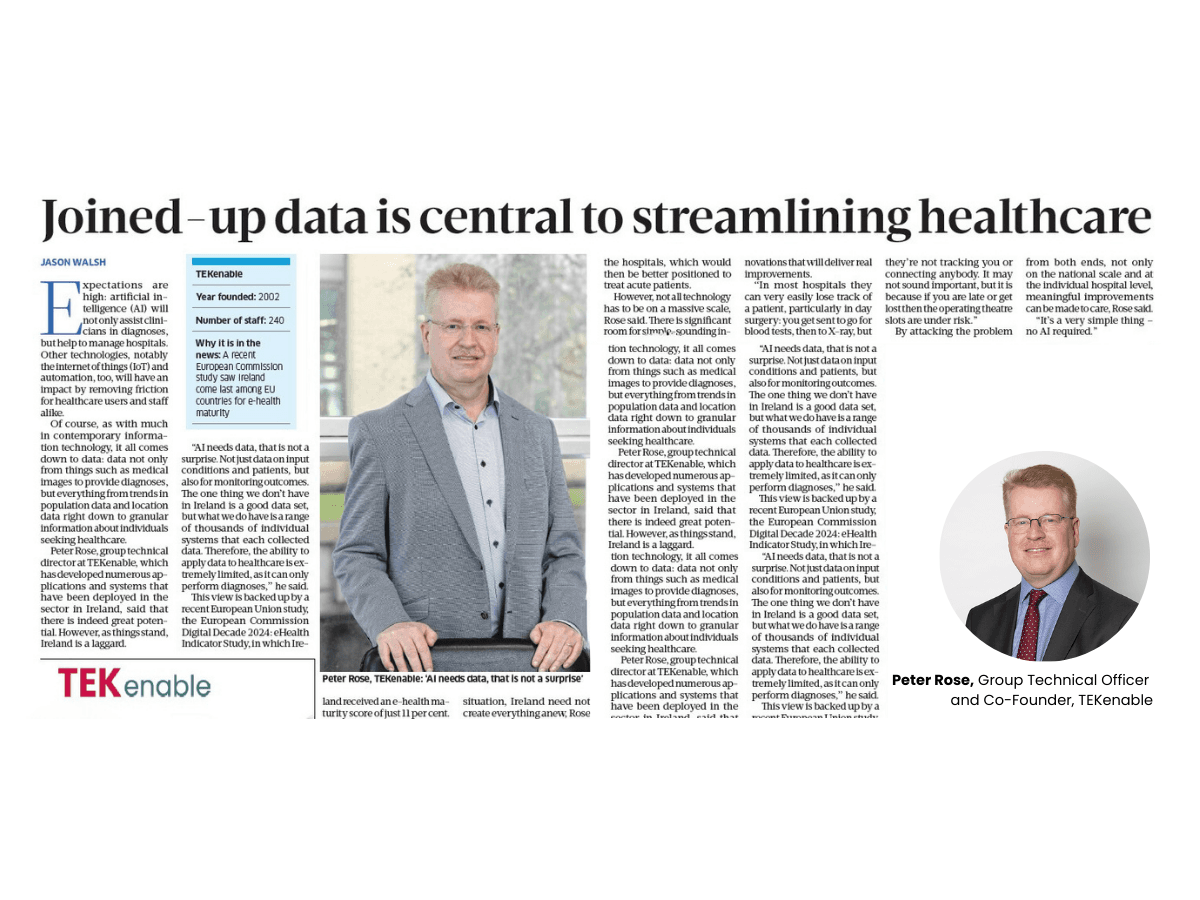AI will change the employment landscape, but it is not a job-destroying technology.
2023 has been the year of artificial intelligence (AI). Advances in the field, while in reality the result of decades of research and development, have appeared apparently out of nowhere, shaking up an IT world that seemed to have been operating on autopilot for a decade.
It is not just the narrow world of IT that sat up and took notice, though. AI’s potential impact on humanity has suddenly become a hot topic of debate, with all manner utopian and dystopian predictions getting an airing. Not least among these is the effect it will have on employment, with some predicting we will finally see the long-predicted leisure society, while others fear it spelling human labour’s apparent coming obsolescence will have darker consequences.
Not long after OpenAI unveiled ChatGPT in November 2022, warning bells started to ring, with commentators sounding the alarm about AI’s potential to destroy jobs. It’s not entirely surprising: here was an AI acting in a manner very similar to humans, so surely all manner of human activities would soon be handed over to it.
A wide range of professions have expressed alarm about so-called ‘generative AIs’, from artists and writers to lawyers, concerned that machines were muscling-in on their territory. After all, generative AI, notably but not exclusively those based on large language models (LLMs), is the first time we have seen machines autonomously create and produce novel material. Unlike other forms of AI, generative AIs provide direct answers to the questions and requests we make of them.
As a result, the fearful response is hardly surprising. But before assuming AI will result in a rash of P45s and pink slips as employers race to replace people with machines, it is worth taking a deeper look at how past waves of technological change have changed how we work and what we work out.
Technological advances have always had an impact on human labour, including by displacing workers. Today, the term ‘luddite’ is used to describe anyone who rejects or even expresses scepticism about modern technology, but it should be remembered that Ned Ludd and his followers did not smash mechanical looms out of mere caprice. They did it because they saw mechanisation as a threat to their livelihoods and status – and they were right.
This is not the only effect technology has, however. Indeed, the deployment of all manner of technologies, from the internal combustion engine to the semiconductor, have created entire categories of jobs that didn’t exist before. From the seventeenth to mid-twentieth century, the term ‘computer’ referred to a person whose job was to perform calculations. Today, billions of us use digital technology to perform jobs that didn’t exist when ‘computer’ was a job for a human – and those of us whose professions did exist back then have seen them transformed almost beyond recognition.
In addition, even the near future can be difficult to predict, and while economists and philosophers have made serious contributions to the debate about AI’s potential impact, much of what has been published lately contributes little other than speculation. (Perhaps the writing, and even reading, of alarmist articles about this or that new technology is something we should farm out to machines).
To give just one example, the prospects facing long-haul delivery drivers have, in recent years, taken on a near mythical status. Truckers, of whom there are some two million in the US alone, will be replaced by AI-powered trucks, unleashing a wave of unemployment and potential social conflict, we are told. And yet, here and now, not only is fully-autonomous driving as far off as ever, there is a shortage of professional drivers.
The likely impact of artificial intelligence on the labour market.
None of which is to say that AI’s impact can be hand-waved away. However, rather than panicking about the imminent obsolescence of humanity, a better approach would be to consider how, in the short and medium term, AI is likely to be deployed in the workplace.
The first thing to note is that AI is not new. Despite the progress made by LLMs and other generative AIs, AI has been in use in business for at least a decade. In this time, AI has not destroyed jobs. Instead, it has created entirely new categories, such as data scientist. Indeed, use of AI is already routine in fields as varied as cyber security, where it is used for threat hunting, to medical diagnosis and patient management. And yet, no-one expects either information security professionals, doctors or nurses to be short of work any time soon.
Nonetheless, it would be foolhardy to imagine that AI will not have a significant impact on jobs. ChatGPT, for instance, has already demonstrated it is perfectly capable of writing computer code. This will not result in developers disappearing, though, no more than the rise of no-code platforms did.
First of all, LLMs like ChatCPT make mistakes. As a result, the best use they can be put to in software development is to reduce the repetitive aspects of the job by writing code snippets on demand for developers who can then test, amend and integrate them into larger projects. Additionally, as with no-code, LLMs could potentially be used by non-developers to rapidly add simple computations that do not warrant the intervention of a developer to their work.
This is just one example of how AI can increase productivity not through automating jobs out of existence but by augmenting them, essentially reducing drudgery and allowing people to concentrate on the broad task at hand rather than the minutiae of process. This is precisely what the introduction of the microcomputer did for a range of white collar occupations, from lawyers to bankers to office administrators, providing them with the ability to sift and sort information that informed their decisions.
Today’s concern that AI will displace professionals needs to be understood in the context of these very people having not only benefited from the introduction of information technology, as well as that of them having watched it chip away at the value of labour in other sectors, such as manufacturing. However, automation was not the only cause of manufacturing job losses. Economic forces unrelated to technology and the availability of a large pool of labour in other parts of the world pushed margins down, meaning that for those businesses that remained committed to their home countries, automation was the only possible means of remaining competitive.
These same pressures could, at least in theory, apply to white collar jobs, but the more likely outcome will be akin to the introduction of the PC: within a decade of the PC’s arrival, they were used in virtually every office in the developed world. But the productivity boost they brought did not result in widespread job losses. If anything, office jobs multiplied. Similarly, few graphic designers today are likely to know what a waxer is. Once an essential piece of equipment, it is now an artefact of industrial archeology. And yet there are certainly more, not fewer, graphic designers today than before the introduction of the Apple Macintosh.
In addition, AI’s impact will be limited by the composition of individual economies and even businesses. In the UK, for instance, the service-driven economy is highly labour-intensive and productivity has suffered from a relative lack of capital investment. As a result, the idea that businesses will be queuing up to spend on technology in order to displace workers seems a curious one. In any case, labour-intensive sectors often remain labour-intensive precisely because replacing people with machines is difficult or even impossible.
Businesses will, of course, seek to use AI to enjoy efficiencies, including through raising productivity. On the macro scale, Goldman Sachs has estimated that AI could raise global gross domestic product (GDP) by as much as seven per cent. Noting that “shifts in workflows triggered by these advances could expose the equivalent of 300 million full-time jobs to automation”, the report’s authors, economists Joseph Briggs and Devesh Kodnani, are certainly not underplaying the likely impact of AI on employment, but it is worth noting that “expose” is the key term, not “replace”.
“Although the impact of AI on the labour market is likely to be significant, most jobs and industries are only partially exposed to automation and are thus more likely to be complemented rather than substituted by AI,” they wrote.
This is worth keeping in mind. While we wait for businesses to figure out how to use AI to create new areas of growth, the likely impact of its inevitable use to drive efficiencies is that our jobs will change, not disappear.





